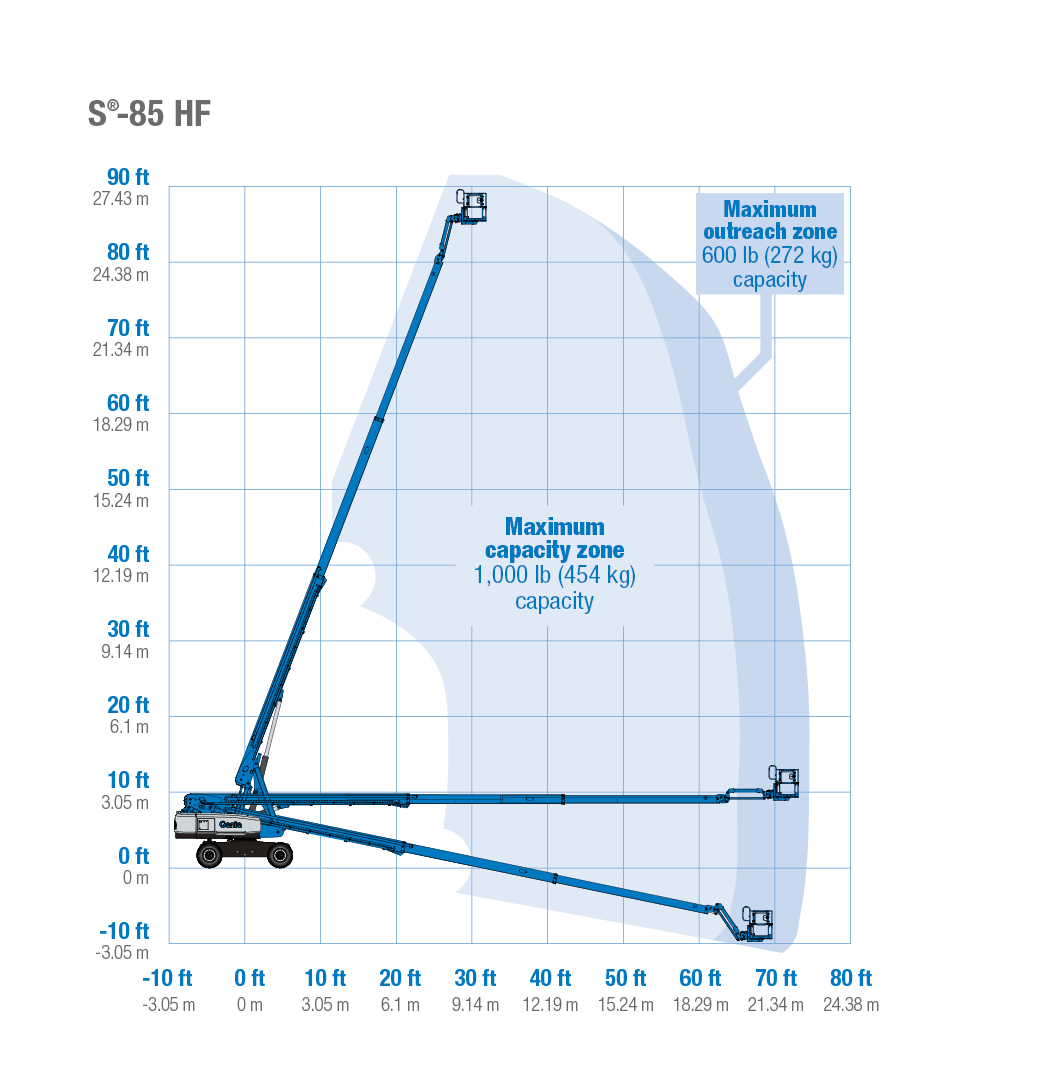S-85 XC E
The Genie S®-85 XC™ E electric telescopic boom lift is an Xtra Capacity™ (XC), electrified telescopic boom – with no compromise on performance compared with a diesel unit, while opening the door to low-noise an...
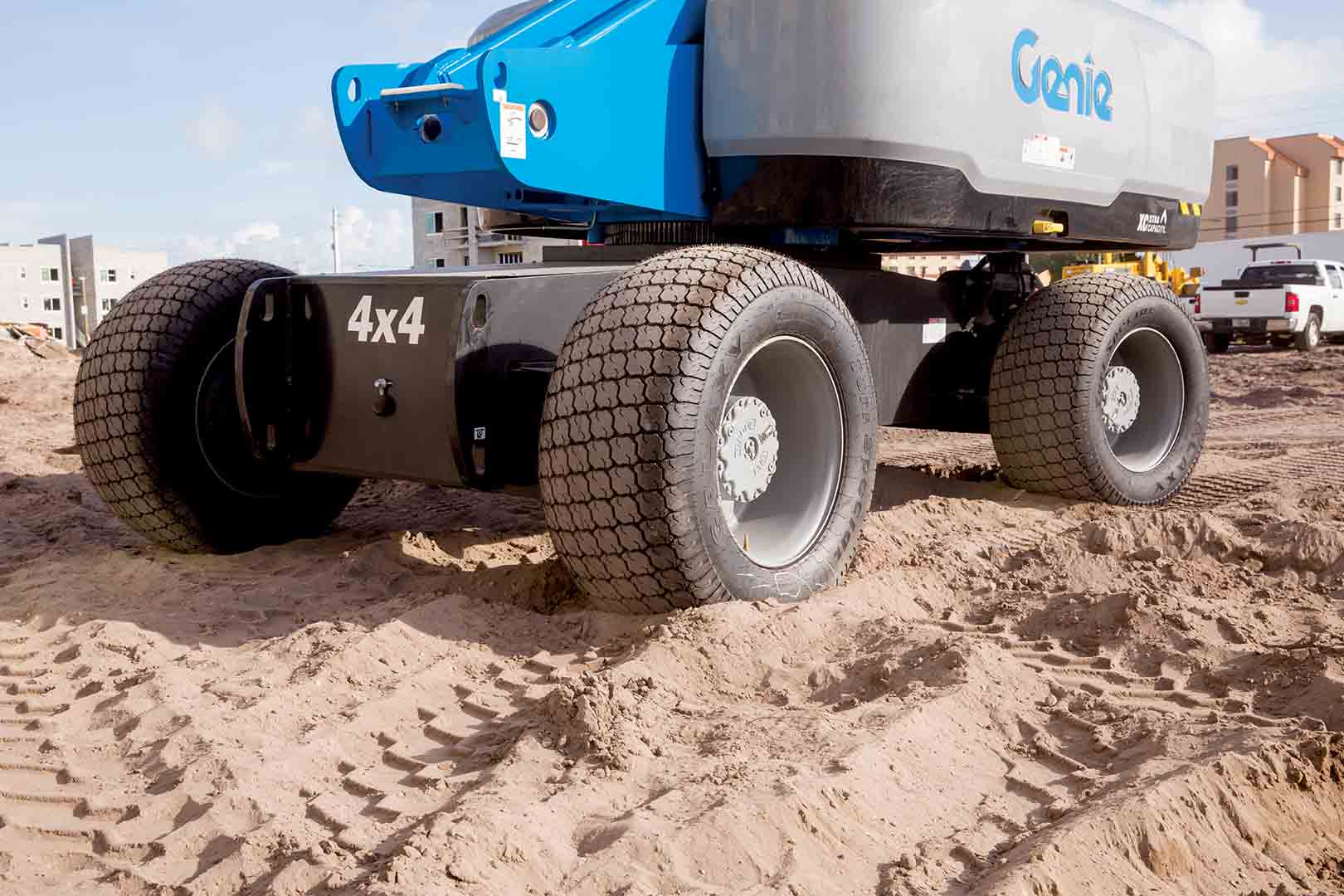
The Genie® S®-85 HF high float telescopic booms are designed to perform heavy-lifting tasks in sensitive turf conditions, such as sand and turf ground conditions. Engineered to “float” on soft or delicate surfaces, the Genie S-85 HF booms protect softer surfaces during operation that could be damaged by the more aggressive tread on regular rough terrain tires.
Overview
This new generation of Genie HF booms retain the productivity features that enhance customers’ ability to get work done quickly, including:
| Specification | Value |
|---|---|
| Max Working Height | 91 ft | 27.91 m |
| Max Horizontal Reach | 72 ft 6 in | 22.10 m |
| Below Ground Reach | 8 ft 8 in | 2.64 m |
| Platform Capacity | 600 lb Unrestricted, 1,000 lb Restricted | 272 kg Unrestricted, 454 kg Restricted |
| Machine Width and Length | 8 ft 6 in, 40 ft 7 in | 2.59 m, 12.37 m |
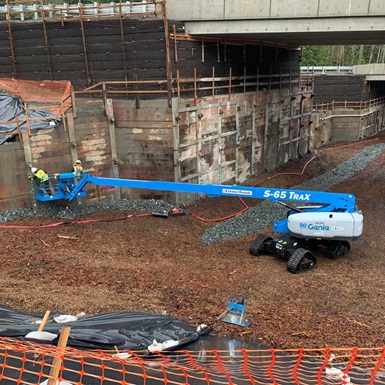
When it’s time for your next boom lift — whether you’re renting or buying — you may be inclined to quickly select the most appropriate wheeled model. But in recent years you may have noticed that more and more tracked models are showing up on a range of worksites. That’s because there’s growing awareness that tracks can offer performance advantages over wheels in certain situations.
Continue Reading
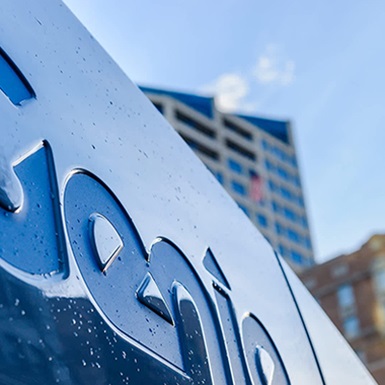
Once equipment is in the field, operators must follow the prescribed operating practices outlined in the manufacturer’s operator’s manual to keep the equipment working safely and productively. The best way to reduce risks while operating a boom lift and scissor lift is to know and follow these eight tips.
Continue Reading
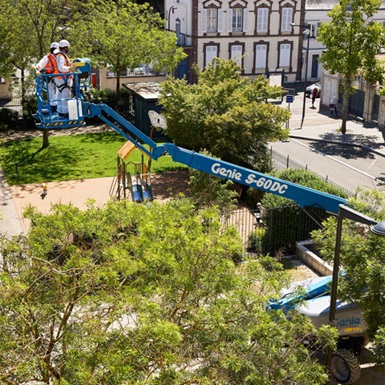
We at Genie have been hearing from contractors and other equipment users — and from rental companies and dealers — with questions about charging, performance, operation and more when it comes to electric boom lifts and electric scissor lifts. With that in mind, here are our responses to some of the most frequently asked questions about electric mobile elevating work platforms.
Continue Reading

While quality certainly impacts manufacturing and production, all functions and all businesses — not just manufacturing — can benefit from defining and deploying quality management systems throughout their organization.
Continue Reading
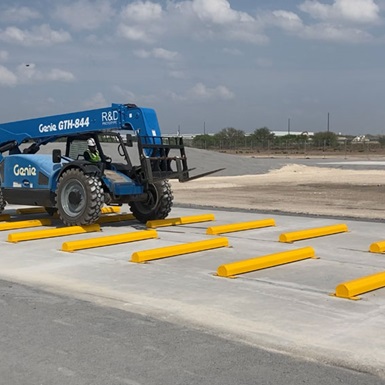
When you’re shopping for a new piece of aerial equipment or a material handler, you probably have a long list of questions related to machine features, specs and cost. But how often do you inquire about the research and development that went into that product?
Continue Reading
